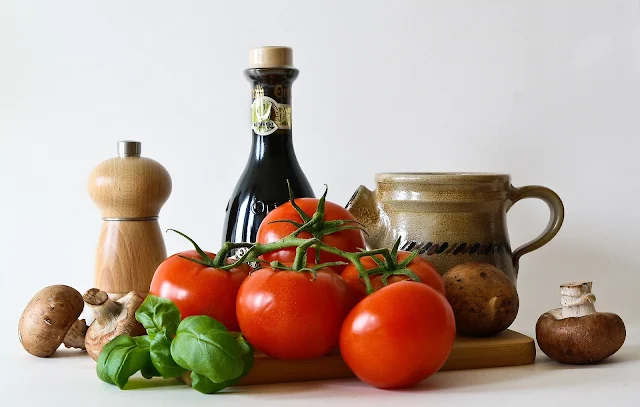Cooking is an art where creativity and skill blend to transform natural ingredients into mouthwatering dishes that satisfy the senses and enrich culture. The impact of this art on health and culture is evident in various societies, where food is an essential part of cultural heritage and social communication. Culinary enthusiasts seek to prepare meals in innovative ways that reflect the diversity of cultures and promote overall health.
Culinary history and development
The emergence and development of gastronomy through the ages
Gastronomy originated in early historical periods, when the need to prepare food was an essential part of everyday life. Through the ages, cooking techniques have undergone tremendous development, from open fire cooking in ancient times, to the use of modern technology such as ovens and electric stoves. This development was not limited to tools and techniques, but extended to the variety and richness of ingredients and recipes available, which greatly affected the variety of dishes and food experiences available to people.
It should be noted that the development of gastronomy was not just a change in the traditional way of preparing food, but these changes reflected a profound social and cultural development in human societies, where food became not only seen as a means of survival, but became part of culture, identity and artistic expression.
The influence of cultural and social factors on the development of gastronomy
The influence of cultural and social factors on the development of gastronomy is important and inspiring for the study of culinary history. The influence of different cultures can be seen in cooking styles, ingredient choices and techniques used. Social values and traditions form the basis for the development of cooking and food preparation patterns, where recipes and skills are passed down between generations.
1. The influence of cultural factors: The influences of culture are manifested in the choice of foods and spices, and the methods of preparation adopted. For example, some cultures consider the use of spicy spices an essential part of their food traditions, reflecting their unique culinary preferences.
2. The influence of social factors: The social environment plays a crucial role in the development of gastronomy, as social customs and cultural celebrations influence the choice of favorite foods and recipes. For example, the impact of social events can be seen in the development and renewal of traditional recipes.
A thorough understanding of deep cultural and social factors is required to understand the origins and evolution of gastronomy through the ages.
Famous chefs in the history of gastronomy
Renowned chefs in the history of gastronomy are the pillars of the field, whose remarkable work has shaped and developed culinary concepts through the ages. Jean Antelmier, an eighteenth-century French chef, is one of the first chefs to document recipes and develop complex cooking techniques.
In the twentieth century, prominent culinary figures such as Julia Child appeared, who is best known for introducing French cooking to American audiences through her television show "The Julia Way", which contributed to spreading the culinary culture and French cuisine.
We can't forget the influence of Gordon Ramsay, a British chef best known for his kitchen TV shows and his co-judging of Master Chef, who has inspired many to explore their passion for cooking and develop their skills.
Gastronomy and culture
The impact of gastronomy on culture and national identity
Gastronomy is one of the important elements that shape the culture and national identity of peoples, as the diversity of foods and culinary techniques reflects the history and heritage of each country. The influence of gastronomy on culture can be seen through traditional recipes that reflect the traditions and values of society, and represent part of the national identity.
1. The influence of cooking on culture: The history of cooking is reflected in food traditions and food ceremonies, where folk foods and traditional recipes are an integral part of the heritage of peoples. For example, the culinary influence in Italian culture can be seen through its fame for pasta and pizza.
2. The impact of cooking on national identity: Gastronomy contributes to strengthening the national identity of countries, as some foods and recipes are an integral part of the country's history and culture. For example, kabsa is one of the most prominent foods that represent the national identity of many Arab countries.
The influence of gastronomy on culture and national identity shows its profound and comprehensive impact on shaping the cultural identity of peoples.
Artistic dishes that express different cultures
Artistic dishes that express different cultures are characterized by diversity and creativity in the use of ingredients and cooking techniques. These dishes reflect the heritage and history of each culture, and express its values and customs. For example, Japanese sushi is one of the most prominent artistic dishes that represent Japanese culinary culture, characterized by harmonious flavors and aesthetic presentation.
1. Japanese Sushi: Japanese sushi reflects the precision and mastery of Japanese cooking, featuring a balance of flavors and the use of fresh ingredients such as rice and fresh fish. Serving sushi on wooden trays is part of the artistic aesthetic of this dish.
2. Indian Curry: Curry is an integral part of Indian culture, reflecting the diversity and richness of ingredients in Indian cooking. Curry is characterized by a balance of flavors between citrus, spicy and sweet, reflecting the plurality of Indian culture.
3. Arabic Appetizers: Arabic appetizers such as hummus and muttabal are part of the Arab food identity, expressing the traditions of hospitality and socialization in the Arab world.
The role of food in cultural celebrations and events
Food is one of the most important elements of cultural celebrations and events, as it plays an important role in strengthening social ties and strengthening the cultural identity of communities. In many cultures, serving and eating is an essential part of celebrations and social events.
The role of food in social communication: Dining is part of the hospitality tradition in many cultures, where serving food to guests is a sign of respect and appreciation. Food can also bring people together and contribute to strengthening social bonds.
The role of food in promoting cultural identity: The type of food and the methods of its preparation and presentation reflect the culture and traditions of peoples. For example, serving oriental food in oriental ceremonies is an expression of the cultural identity of these cultures.
The role of food in religious ceremonies: Food occupies a special place in religious ceremonies, as eating is considered part of religious rites in many religions. Serving food in these cases is an expression of joy and thanksgiving to God.
These points highlight the importance of food in strengthening social bonds and promoting cultural identity in cultural celebrations and events.
Gastronomy and health
The importance of choosing healthy ingredients in cooking
The choice of healthy ingredients in cooking is of great importance in improving one's health and preventing diseases. When choosing fresh and nutritious ingredients, the nutritional value of food is improved and overall health is promoted. Healthy ingredients contribute to boosting the immune system and reducing the risk of chronic diseases such as heart disease and diabetes. Healthy ingredients also help improve digestion, increase energy levels, and maintain a healthy weight.
1. Improve the value of food: By choosing fresh and nutritious ingredients, you can increase the nutritional value of food and ensure that the body gets essential nutrients such as vitamins, minerals and dietary fiber.
2. Maintain health: Healthy ingredients contribute to promoting overall health and preventing diseases, as cooking with healthy ingredients is part of a healthy lifestyle.
3. Environmental sustainability: Choosing healthy ingredients can contribute to supporting sustainable agriculture and protecting the environment from pollution from harmful agricultural practices.
The choice of healthy ingredients in cooking emphasizes the importance of adopting a healthy and sustainable lifestyle for the individual and the environment.
The effect of cooking methods on the nutritional value of food
Cooking methods greatly affect the nutritional value of food, as some methods can lead to the loss of important nutrients. The impact of cooking methods depends on temperature, time and ingredients used, as steaming, grilling and grilling are the best ways to preserve the value of nutrients. On the flip side, deep frying and deep frying may lead to the loss of many vitamins and minerals due to high heat and the use of oils.
1. Steam: Preserves the value of nutrients well, as the ingredients are not exposed to high heat directly.
2. Grill and grill: It allows food to be cooked directly heat without the use of oils, which preserves the value of nutrients.
3. Frying and deep frying: It can lead to loss of vitamins and minerals due to high heat and oil use.
The relationship between a healthy lifestyle and gastronomy
The relationship between a healthy lifestyle and gastronomy is key, as a healthy lifestyle can influence eating choices and cooking methods significantly. When adopting a healthy lifestyle, this includes choosing healthy foods and using healthy cooking methods.
1. Choose healthy foods: It is an essential part of a healthy lifestyle, as the focus is on consuming vegetables, fruits, whole grains and healthy proteins.
2. Use healthy cooking methods: This includes grilling, steaming and fat-free cooking, as these methods contribute to maintaining the nutritional value of food.
3. The impact of a healthy lifestyle on the dining experience: A healthy lifestyle can positively impact the dining experience, as attention to nutrition can be part of the enjoyable cooking and eating experience.
These points show the importance of following a healthy lifestyle in achieving a nutritional and healthy balance, and motivating the use of healthy cooking methods to maintain health and wellness.
Conclusion
In short, gastronomy can be said to have a significant impact on culture and health. By employing healthy technologies and choosing healthy food ingredients, chefs can play an important role in promoting food culture and improving overall health. Communities should be encouraged to adopt a healthy lifestyle that combines healthy gastronomy with sound food culture to ensure public health and wellness.





